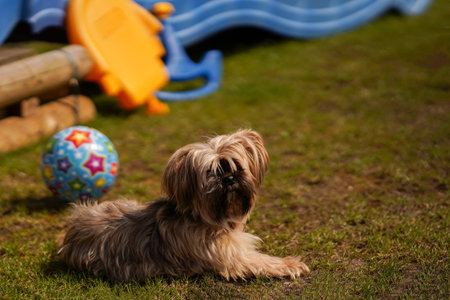Understanding the Needs of Senior Pets
As our beloved pets grow older, their needs begin to shift in noticeable ways. Senior dogs and cats often experience physical changes such as reduced mobility, joint stiffness, decreased vision or hearing, and a slower metabolism. Mentally, they may show signs of cognitive decline like confusion, anxiety, or changes in sleep patterns. Just like people, aging pets can feel bored or isolated if their environment becomes too routine or unstimulating.
This is why providing proper enrichment for senior pets becomes even more important as they age. Enrichment toys and activities do more than just entertain—they help keep your pet’s mind sharp and body active, which can support their overall well-being and quality of life. Engaging with the right kinds of toys can encourage gentle exercise, stimulate mental processes, and offer comfort during times of stress or loneliness. By understanding what your senior pet is going through physically and mentally, you’ll be better equipped to choose enrichment options that are safe, enjoyable, and tailored to their changing abilities.
2. Benefits of Enrichment for Aging Pets
As our pets grow older, their needs change—and so does the way we care for them. Enrichment toys are more than just fun and games; they play a crucial role in supporting the overall well-being of senior pets. By offering the right kinds of stimulation, these toys can keep aging dogs and cats mentally sharp, physically active, and emotionally content.
Mental Stimulation Keeps Minds Sharp
Just like humans, senior pets can experience cognitive decline as they age. Puzzle feeders, treat-dispensing balls, and interactive toys challenge their brains, helping to slow down memory loss and keep their minds engaged. Regular mental stimulation can even reduce anxiety and lessen unwanted behaviors like excessive barking or meowing.
Physical Activity Supports Mobility
While older pets may not have the same energy as when they were younger, gentle movement is still important for maintaining joint health and muscle tone. Toys that encourage low-impact activity—like soft fetch toys or slow-moving laser pointers—can help keep your pet limber without overexertion.
| Enrichment Type | Mental Benefits | Physical Benefits |
|---|---|---|
| Puzzle Feeders | Cognitive stimulation, problem-solving | Encourages movement during feeding |
| Interactive Plush Toys | Reduces boredom, engages senses | Gentle carrying or pawing motion |
| Treat-Dispensing Balls | Focuses attention, rewards learning | Promotes light exercise while seeking treats |
| Scent-Based Toys | Stimulates memory, natural instincts | N/A (primarily mental) |
Emotional Contentment Through Play
Older pets sometimes become withdrawn or anxious as they age. Regular engagement with enrichment toys can provide comfort, reduce feelings of loneliness, and strengthen the bond between you and your pet. A simple routine of daily play—even if its only for a few minutes—can help your senior dog or cat feel secure and loved during their golden years.
![]()
3. Types of Enrichment Toys Suitable for Senior Pets
When it comes to keeping our senior pets mentally and physically stimulated, choosing the right enrichment toys is key. As pets age, their needs and abilities change—so the toys that once excited them might no longer be safe or engaging. Thankfully, there are several categories of enrichment toys designed specifically with older dogs and cats in mind, ensuring they can still enjoy playtime while staying comfortable and safe.
Puzzle Feeders
Puzzle feeders are a fantastic way to keep aging pets minds sharp while also making mealtime more interesting. These toys require pets to solve simple problems to access treats or kibble, which helps slow down fast eaters and encourages natural foraging behaviors. Look for puzzle feeders with larger openings or adjustable difficulty levels so senior pets with reduced vision or mobility can still participate without frustration.
Gentle Chew Toys
Chewing is a natural behavior that can help alleviate stress and maintain dental health, but not all chew toys are suitable for seniors. For older pets with sensitive teeth or gums, opt for softer rubber or plush chew toys rather than hard bones or nylon chews. Many American pet stores now carry lines of gentle chew toys labeled specifically for senior dogs and cats, so you can easily find options that balance safety with enjoyment.
Sensory Stimulation Items
Sensory stimulation remains important as pets age—even if their hearing, sight, or sense of smell isn’t what it used to be. Toys that produce mild sounds (like crinkle material), have varied textures, or include subtle scents can help keep senior pets engaged without overwhelming them. Catnip-infused plushies for cats or lavender-scented toys for dogs are popular choices across the U.S., providing both comfort and entertainment.
Safety First
No matter which category you choose from, always prioritize safety when selecting enrichment toys for your senior pet. Avoid small parts that could pose choking hazards and inspect toys regularly for signs of wear. By focusing on these specially designed toys, you’ll ensure your furry companion stays happy, active, and mentally stimulated throughout their golden years.
4. What to Look for When Choosing Toys
When selecting enrichment toys for senior pets, it’s important to focus on their unique needs and preferences. Older dogs and cats may not be as agile as they once were, and their dental health can also impact what types of toys are safe and enjoyable. Here are some practical tips to guide you:
Consider Mobility and Physical Limitations
Senior pets often experience reduced mobility due to arthritis or joint stiffness. Opt for toys that don’t require excessive jumping, running, or pouncing. Puzzle feeders, treat-dispensing balls, or soft plush toys can engage your pet’s mind without straining their body.
Pay Attention to Dental Health
Many older pets have sensitive teeth or gums. Avoid hard rubber or plastic chew toys that could cause discomfort. Instead, look for toys made from softer materials or those designed specifically for dental care in seniors. These can help maintain oral hygiene while being gentle on aging mouths.
Cater to Your Pet’s Interests
No two senior pets are alike—some may still love a good game of fetch, while others prefer slow-paced mental challenges. Observe your pet’s current play habits and energy levels. If they enjoy sniffing and searching, interactive toys with hidden treats can be a great fit. For cuddle-lovers, plush toys provide comfort and security.
Toy Selection Guide for Senior Pets
| Factor | Recommended Toy Features | Why It Matters |
|---|---|---|
| Mobility | Lightweight, easy-to-carry, puzzle feeders | Reduces strain on joints; promotes gentle movement |
| Dental Health | Soft, textured, dental-friendly materials | Avoids pain; supports oral care without risk of injury |
| Interests | Treat-dispensers, plush toys, scent-based games | Keeps engagement high based on individual preferences |
| Sensory Needs | Toys with gentle sounds or scents | Stimulates senses as vision/hearing may decline with age |
Pro Tip: Rotate Toys Regularly
To keep things fresh and exciting, rotate your senior pet’s toys every week. This prevents boredom and encourages ongoing curiosity—just make sure all toys remain clean and in good condition.
5. DIY Enrichment Ideas Using Everyday Items
Not every engaging toy for your senior pet needs to come from a store shelf. Sometimes, the best enrichment tools are already in your home—waiting to be repurposed into something fun and stimulating. Creating DIY enrichment activities not only saves money but also lets you tailor playtime to your pet’s unique preferences and abilities as they age.
Simple Food Puzzles from Household Items
Try using empty toilet paper rolls, egg cartons, or muffin tins as homemade puzzle feeders. Hide a few pieces of your senior dog or cat’s favorite treats inside and gently fold the ends or cover sections with tennis balls. These puzzles encourage natural sniffing and foraging instincts, keeping your pet mentally sharp without requiring much physical effort.
Towel and Blanket Games
Lay out an old towel or small blanket, sprinkle treats on it, and roll it up loosely. Let your senior pet nudge, paw, or gently unroll the towel to discover the hidden rewards. This activity is especially good for pets with limited mobility since it can be done at their own pace.
Cardboard Boxes: The Unsung Heroes
A simple cardboard box can become a world of adventure for a senior cat—or even a curious dog! Cut different-sized holes in the sides and drop in a few toys or treats. For cats who love to hide or nap, add a soft blanket inside for comfort and security.
Scent Exploration with Old Clothing
Let your pet explore by hiding treats in pockets or folds of an old t-shirt or sweater that smells like you. Senior pets often find comfort in familiar scents, making this both mentally enriching and emotionally soothing.
Safety Tips for DIY Toys
Always supervise your senior pet during play with homemade enrichment items to make sure nothing is swallowed or chewed apart. Avoid items with small parts that could pose a choking hazard, and regularly inspect toys for wear and tear. With just a little creativity and observation, you can give your aging companion meaningful engagement every day—no fancy gadgets required!
6. Monitoring Safety and Enjoyment
Once you’ve selected new enrichment toys for your senior pet, it’s essential to pay close attention to how they interact with these additions. Start by supervising their first few play sessions, watching for any signs of discomfort, frustration, or excessive fatigue. Older pets may have reduced stamina, diminished senses, or joint pain that could affect how they use toys—so always be on the lookout for limping, hesitation, or sudden loss of interest.
Check toys regularly for any wear and tear. Small parts can break off and become choking hazards, especially if your pet has dental issues or weaker jaws. Opt for durable materials that won’t splinter or fray easily. If your pet seems uninterested in a particular toy after multiple tries, don’t force it; instead, try a different texture, sound, or activity that better suits their current abilities and preferences.
Always consider the environment where your senior pet plays. Make sure the area is free from slippery floors or obstacles that could cause tripping or injury. For pets with limited vision or mobility, keep toys within easy reach and avoid overly complex puzzles that might lead to frustration rather than engagement.
Your pet’s enjoyment is just as important as their safety. Look for tail wags, purrs, gentle pawing, or attentive sniffing—these are good indicators your senior companion is having fun and benefiting from the enrichment you’ve provided. Remember, every senior pet is unique: what delights one may not appeal to another.
By staying observant and responsive to your senior pet’s needs during playtime, you’ll ensure they remain both safe and happily engaged for years to come.


